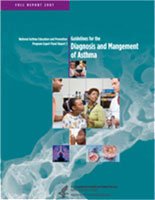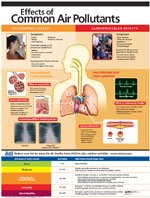Resources about Asthma
On this page:
Resources for Parents, Caregivers and Kids
It's hard to see a child sick. The good news is you can help a child gain control over asthma. That means fewer days out of school and fewer attacks that can be scary for you and the child.
Along with the doctor, you have an important role in helping a child control asthma.
Develop an Asthma Action Plan
Ask your doctor to help you create an asthma action plan for your child that will help you learn to prevent your child's asthma attacks. You can order copies or download sample asthma action plans from the following places.
- National Institutes of Health (NIH) National Heart, Lung, and Blood Institute (NHLBI): Available in HTML, PDF, and Spanish versions.
- Public Health Institute: Available in English, Spanish, Vietnamese, and Chinese.
Join the Online Asthma Community
The Asthma and Allergy Foundation of America (AAFA) Support Community connects patients, families, friends and caregivers for support and inspiration. Visit the AAFA webpage to learn more.
Find Additional Resources
- Publications for Parents, Caregivers, and Kids: Find information on how you can help your child gain control over asthma or make your home asthma-friendly, as well as fun children's books to teach your child about asthma.
- AIRNow.org: Find information on local outdoor air quality conditions and asthma.
- BurnWise: Learn about wood smoke and asthma.
Resources for Healthcare Professionals
- Resources for Your Patients and Caregivers
- Encourage the Use of Asthma Action Plans
- Develop a Comprehensive Asthma Home Visit Program
- Learn More through Online Courses
- Join Asthma Community Network
Resources for Your Patients and Caregivers
Breathing Freely: Controlling Asthma Triggers Video
As a healthcare professional, play this asthma video for your patients and caregivers or provide them with our free publications.
Featuring conversations with medical professionals and parents of children with asthma, this video presents the role of the environment in triggering and worsening asthma attacks and offers ways to manage asthma to help children lead normal, healthy lives.

National Asthma Education and Prevention Program: Expert Panel Report 3
Published by the National Heart, Lung, and Blood Institute (NHLBI), the National Asthma Education and Prevention Program: Expert Panel Report 3: Guidelines for the Diagnosis and Management of Asthma (July 2007 update) emphasize the importance of asthma control and introduce new approaches for monitoring asthma.
Encourage the Use of Asthma Action Plans
A written asthma action plan encourages self-management of asthma. Plans include a list of the person's triggers and how to avoid them, instructions for taking asthma medicine, information on what to do during an asthma episode, instructions on when to call a doctor, and emergency telephone numbers. Action plans should be updated at least once a year.
Develop a Comprehensive Asthma Home Visit Program
Home-based, multi-trigger, multi-component interventions with an environmental focus for children with asthma are proven to reduce exposure to multiple indoor asthma triggers (e.g., The Community Guide: What Works).
Use our free publications for healthcare providers to begin or improve a home visit program for your asthma patients. These interventions involve home visits by trained personnel to conduct two or more activities, including:
- Assessment the home environment;
- Changing the indoor home environment to reduce exposure to asthma triggers; and
- Education about the home environment.
EPA provides resources and information for physicians and healthcare plan administrators to create home visit programs. Home visit programs are proven to be effective to improve overall quality of life and productivity, improving asthma symptoms and reducing the number of school days missed due to asthma.
Learn More through Online Courses
- Ozone and Your Patients' Health: Created by EPA, this short, evidence-based training course is designed for medical professionals who counsel patients about asthma and respiratory symptoms, including family practice doctors, pediatricians, nurse practitioners, and asthma educators.
-

Cover of brochure showing air pollutants' effects on the lungs - Case Studies in Environmental Medicine Environmental Triggers of Asthma: Created by the Agency for Toxic Substances and Disease Registry (ATSDR), this course is to designed to increase the primary care provider's knowledge of hazardous substances in the environment and to promote the adoption of medical practices that aid in the evaluation and care of potentially exposed patients. The case studies provided in this tutorial focus on environmental triggers of asthma.
Join Asthma Community Network
Join Asthma Community Network to talk with other practitioners, access an extensive resource bank and watch archived Webinars to help you develop a comprehensive home visit program.
- Asthma Community Network Webinars: Webinars featured on Asthma Community Network present the latest knowledge and information from leading experts and asthma management program champions from across the country. Offered at no cost, webinars are an opportunity to discover state of the art tools and resources and learn effective strategies in asthma program design and delivery.
